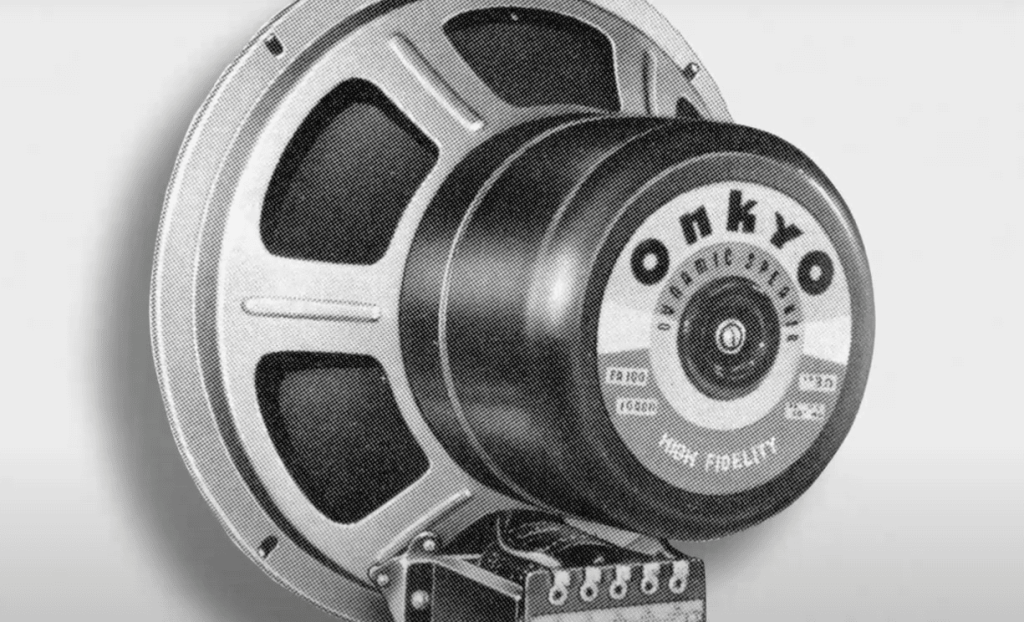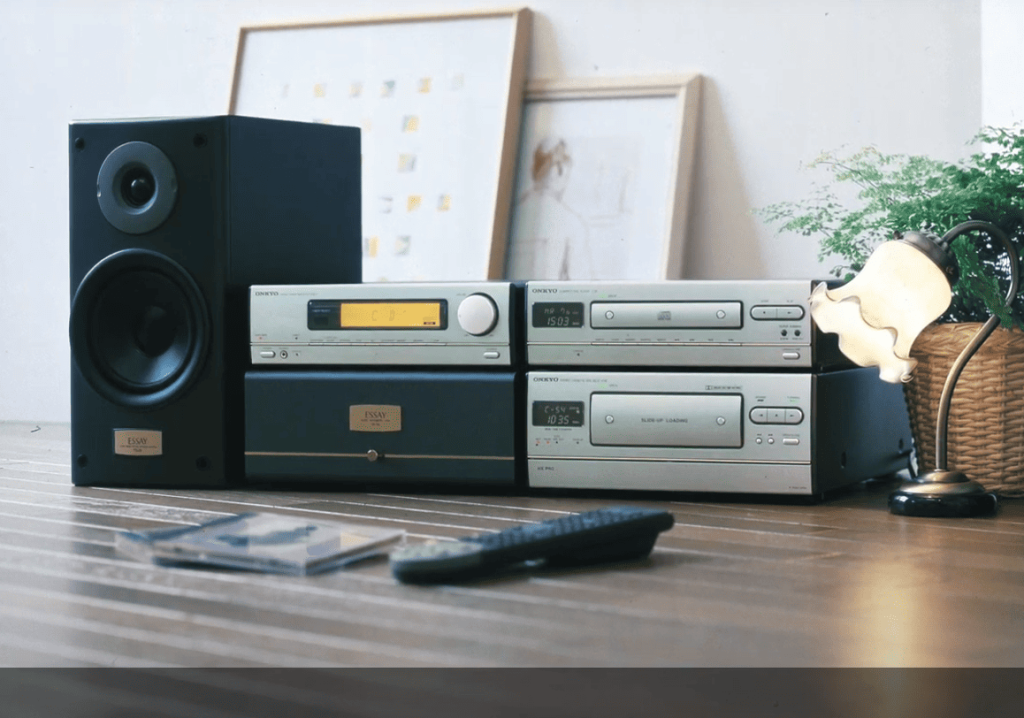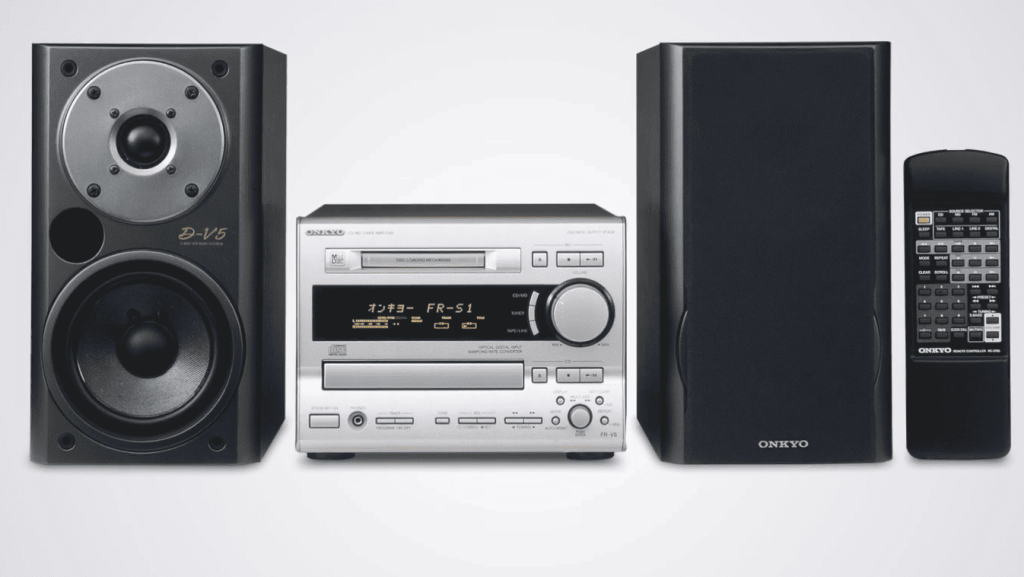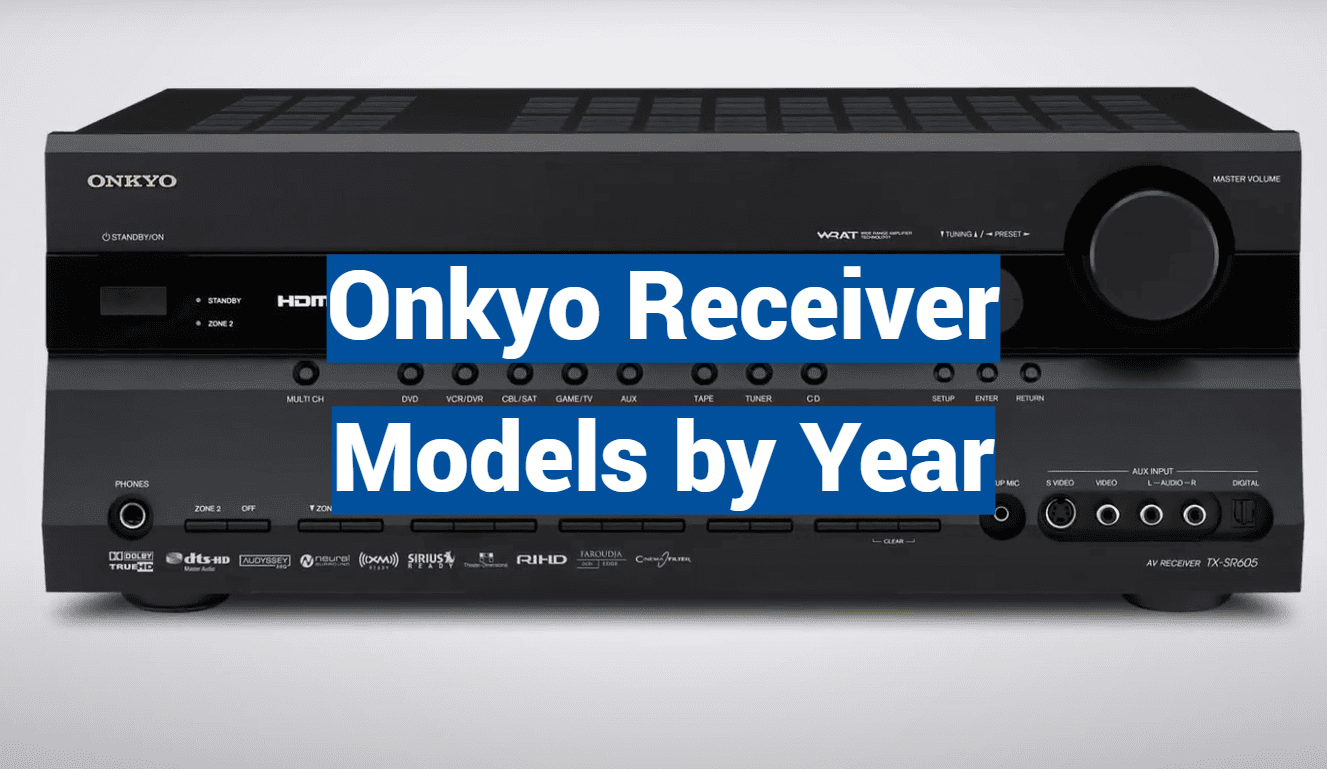Did you know every audio component created by a certain Japanese company since 1946 carries DNA from musicians? Born from the ashes of World War II, Osaka Denki Onkyo KK began with an unusual hiring policy: only applicants who could distinguish concert A (440 Hz) from a slightly detuned version earned positions. Founder Takeshi Godai believed true audio innovation required engineers who felt music as deeply as they understood circuits.
This philosophy shaped devices that transformed living rooms into concert halls. The brand’s name itself whispers its mission – combining the Japanese words for “sound” and “harmony.” While competitors chased specs, Godai’s team focused on emotional resonance, creating components that made listeners feel the difference as much as hear it.
From vacuum tube systems to Dolby Atmos powerhouses, each product reflects seven decades of disciplined evolution. You’ll discover how cultural shifts – from vinyl’s warmth to streaming’s convenience – sparked technological leaps. We’ve mapped every milestone against global audio trends, revealing why certain features emerged when they did.
Whether you’re restoring a 1970s gem or configuring a modern surround sound setup, understanding this timeline unlocks richer appreciation for your equipment. It’s not just about watts or channels – it’s the story of how passionate humans bridged art and science to elevate everyday listening.
Key Takeaways
- The company’s name reflects its core mission of blending precise sound with artistic harmony
- Founder Takeshi Godai prioritized musical aptitude over technical skills when building his original team
- Product development directly responded to cultural shifts in music consumption habits
- Historical events shaped technological priorities across different eras
- Vintage models offer insights into audio engineering breakthroughs of their time
- Modern systems maintain philosophical continuity with 1940s design principles
Introduction to Onkyo’s Legacy and Sound Philosophy
What if your home stereo could capture the soul of a live concert? This question drives engineers who view speakers as emotional bridges between artists and audiences. Their secret? Treating every amplifier like a Stradivarius violin – crafting components that sing rather than simply function.
| Era | Focus | Technology | Slogan |
|---|---|---|---|
| 1970s | Hi-Fi purity | Analog amplification | “Artistry in Sound” |
| Present | Immersive experiences | Dolby Atmos integration | “Imaginative Sight & Sound” |
The table above shows how priorities shifted while preserving core values. Where vinyl-era designs emphasized warmth, modern systems create 3D audio landscapes. Yet both share DNA – a belief that true quality makes you forget you’re listening to equipment.
This philosophy explains why audiophiles praise the brand’s consistency. From wooden cabinets housing vacuum tubes to sleek Dolby-enabled hubs, each piece serves the music first. Technical specs matter, but only as tools to unlock goosebump moments during your favorite tracks.
Engineers here often say: “We don’t build boxes – we design time machines.” Whether reproducing a 1967 jazz recording or streaming today’s chart-topper, their creations aim to dissolve the walls between listener and performer. That’s harmony you can feel.

Evolution of Onkyo Receiver Models in the 1940s and 1950s
Imagine reconstructing a nation while redefining sound quality. That’s exactly what happened in Osaka workshops during Japan’s recovery era. Workers combined salvaged materials with radical ideas to craft components that would shape audio history.
Founding Sparks
The late 1940s brought bold moves. A premium phono cartridge debuted at 300 yen – staggering when most earned 500 yen monthly. This device set a pattern: superior performance justifying higher costs. Early adopters discovered richer vinyl details through its precision tracking.
Game-Changing Designs
1948 became a landmark year with two innovations:
| Product | Breakthrough | Market Impact |
|---|---|---|
| CP1000 Cartridge | High-end performance blueprint | Proved premium demand existed |
| ED-100 Speaker | Non-pressed paper cone | Redefined durability & clarity |
The ED-100’s 25cm driver delivered shocking clarity. Critics raved about its balanced response across frequencies. Music lovers paid 50% extra without hesitation – a lesson in value perception.
These early successes funded more research. Engineers focused on emotional resonance rather than specs. As one reviewer noted: “Their speakers don’t just play notes – they breathe life into them.”
This era established core principles still guiding audio development today. Every modern system owes something to those post-war pioneers who turned scarcity into sonic advantage.
Pioneering Developments in the 1960s and 1970s
Picture this: a living room transformed into a sonic playground where every instrument occupies its own airspace. The 1960s made this vision real through modular audio setups that redefined home listening. Component systems became musical LEGO sets – enthusiasts could mix turntables, amplifiers, and speakers to craft personalized soundscapes.
The Impact of Component Stereo Systems
1966 changed everything with a desktop marvel measuring just 16 inches wide. The ST-55 stereo system packed concert-hall dynamics into compact form, its precision-tuned components delivering shocking clarity. Music stores couldn’t keep shelves stocked – buyers craved its ability to make Beatles albums sound freshly recorded.
| Product | Innovation | Impact |
|---|---|---|
| ST-55 (1966) | Space-efficient design | Democratized high-fidelity audio |
| MC2200 (1968) | Multi-channel architecture | Ignited surround sound craze |
Japan’s 1968 audio revolution began with the MC2200. This “orchestra in a box” let listeners position instruments around rooms, creating immersive experiences years before surround sound became standard. Its success funded bold global moves – including a 1971 rebranding that unified international operations under a single sonic banner.
The early 70s saw strategic expansions mirroring rock music’s global spread. German engineering merged with Japanese precision when European operations launched in 1972, followed by an American division three years later. This era proved great sound needs no translator – just components working in perfect harmony.

Exploring Onkyo Receiver Models by Year
Imagine a stereo component so thoughtfully engineered it becomes a family heirloom. That’s the story of audio systems developed during two transformative decades. The P300 preamplifier and M500 amplifier pairing defined home audio excellence through meticulous upgrades that respected their original vision.
Visual Feedback Meets Sonic Precision
The M500’s glowing power meters weren’t just eye candy. These analog gauges let listeners see their music’s dynamic range. Audiophiles loved watching needles dance during crescendos – a feature that turned technical specs into visceral experiences.
Circuitry That Changed the Game
At the heart of these systems lay the Dual Super Servo design. This proprietary technology minimized distortion even at peak volumes. Unlike competitors’ gear that crackled under pressure, these components delivered clean energy to speakers during complex passages.
| Feature | Innovation | Benefit |
|---|---|---|
| Modular Design | Separate pre/power units | Easy upgrades |
| Servo Circuits | Real-time adjustments | Consistent sound |
Regular updates kept these systems relevant. Each model refresh brought subtle improvements without compromising core values. This approach created loyal fans who appreciated meaningful progress over flashy gimmicks.
Four decades later, these units still power vintage setups. Their enduring popularity proves great design transcends trends – it creates lasting relationships between listeners and their music.
The Golden Age of Audio: The 1970s Revolution
The 1970s redefined home listening through technical breakthroughs that turned living rooms into concert spaces. Hi-Fi enthusiasts demanded sound so pure it felt tangible – a craving met by engineers treating every circuit like a musical instrument. Their guiding principle? “Artistry in Sound”, a slogan reflecting the decade’s obsession with emotional audio experiences.
In 1972, a game-changing amplifier stunned critics at Japan’s Stereo Component Grand Prix. The Integra A725 dominated its category, praised for using computer modeling – cutting-edge tech at the time. Judges noted its “scientific approach to warmth,” blending precise measurements with rich tonal character.
| Product | Innovation | Legacy |
|---|---|---|
| Integra A725 (1972) | Early computer-assisted design | Proved tech enhances musicality |
| TS-503 Tuner (1974) | Quartz-stabilized tuning | Solved analog drift issues |
Early 70s tuners frustrated listeners with fuzzy stereo reception. Engineers tackled this by merging old and new tech in the TS-503. Its phase-locked loop system used quartz crystals to stabilize signals – like giving radio waves a GPS tracker.
This era thrived on solving impossible challenges. As one designer recalled: “We didn’t just fix problems – we rewrote what ‘good sound’ meant.” Audiophiles rewarded this passion, snapping up equipment that made every listening session feel historic.
The 70s cemented ideas still shaping premium audio today. It wasn’t just about louder or clearer – it was about crafting moments where time seemed to stop, letting music speak for itself.

Transition and Technological Shifts in the 1980s and 1990s
The 1980s rewired home audio with digital dreams. As synthesizers dominated airwaves, living rooms buzzed with new tech that blended analog warmth with binary precision. This era saw music lovers juggling cassette mixtapes and laser discs, demanding gear that could handle both worlds.
Cassette Recorders, Analog Tuners, and Early AV Innovations
High-end cassette decks became status symbols, their chrome-plated buttons glowing like cockpit controls. Engineers faced a puzzle: how to make tape hiss disappear without losing musical sparkle. The answer came through quartz-locked tuning – using crystal oscillators to stabilize frequencies.
Early AV systems transformed TV nights into events. Suddenly, VCRs needed audio channels that matched their visual punch. This push birthed components that treated Top Gun’s jet engines with the same care as Beethoven’s symphonies.
Introduction of THX Certification and Surround Sound
Everything changed in 1983 when George Lucas’ audio team set new standards. THX certification turned living rooms into approved cinemas, demanding reference-grade performance from every speaker and wire. For the first time, home setups could replicate theater-scale immersion.
Multi-channel audio went mainstream as Dolby Pro Logic entered living rooms. Listeners discovered sounds creeping from behind couches – a sound engineer’s nightmare turned magical reality. These surround systems didn’t just play movies; they wrapped audiences in storytelling.


